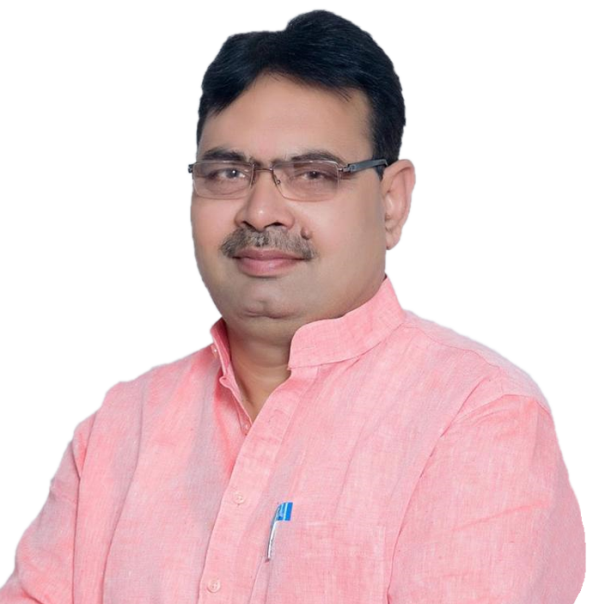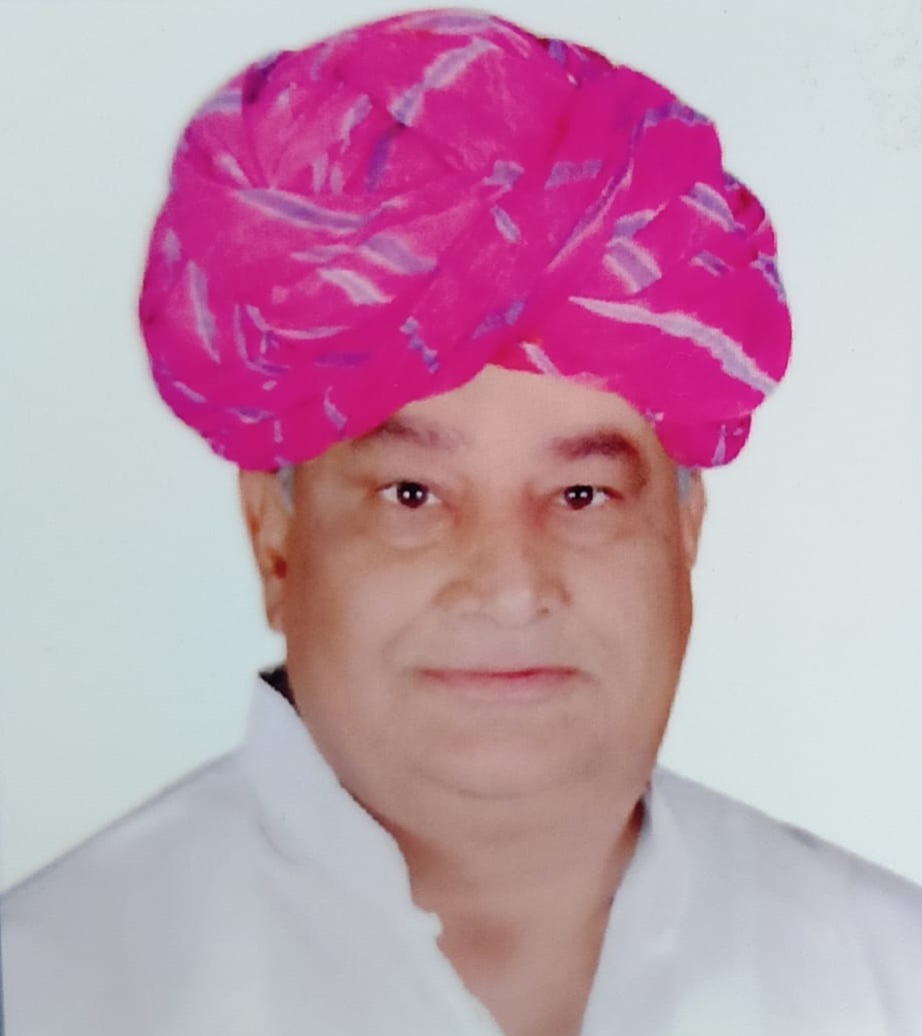 Rajasthan Government
Rajasthan Government
 Mr. Bhajan Lal Sharma
Mr. Bhajan Lal SharmaHon'ble Chief Minister
 Mr. Kirodi Lal Meena
Mr. Kirodi Lal MeenaHon'ble Minister Rural Development Department
Rajeevika has till date peneterated into 12615 villages covering over 12 lakh housholds and has been able to establish over 1 lakh vibrant SHGs with bank linkages. These SHGs are primarily involved on interloaning and running small petty businesses amongst them.Over 300 Community Level Federations have been formed and receive funds for setting up small processing centres..With this strength on ground, Rajeevika aims to provide sector specific support to enhance the current livelihood gamut of activities and provide more opportunities in blocks currently deprived of vibrant economies. “Ek Block Ek Utpad” or “One Block One Product” is envisioned as a project to strengthen rural economies by providing sector specific and need based support for enterprises in 150 blocks of Rajasthan where Rajeevika has a footprint. Through this project,every block will identify a principal product that can be taken up for value addition and marketing.
The project objective is to “ build a robust block level rural economy by optimizing available local resources for economic empowerment of SHG women.”
The project aims to work with 150,000 SHG women from 150 blocks shortlisted for One Block One Product intervention.
The project will be implemented in 150 blocks of Rajasthan where Rajeevika has supported SHGs and Community Institutions.
The project duration will be 4 years and will be implemented in phases as mentioned below:
| Details | Year 1 | Year 2 | Year 3 | Year 4 |
|---|---|---|---|---|
| Blocks | 50 | 50 | 50 | - |
| Cumulative Blocks | 50 | 100 | 150 | 150 |
The main objective of this component is to identify,develop and create sustainable, self- reliant value chain for principal products in the block.
This component will identify principal products in each selected block and develop the entire value chain of these products to ensure setting up of self- reliant,sustained micro businesses which are owned and managed by block level enterprises.
This component has three subcomponents:
The sub component will focus on identifying the principal product from each block based on predetermined criteria to promote block level self reliant rural micro enterprises for SHG women in the selected blocks.SHGS/CLFs where investments have already been made by different organizations i.e Rajeevika, MSME, TRIFED or any other initiatives in the state will be given importance for scaling up and will be promoted through this project. The criteria for choosing an activity or a product to be supported –
In the case of certain promising products where Value chains can be developed, a Block Diagnostic study (BDS) will identfy selected products/services that have a potential in each block, a potential for scaling up and creating a impact in the lives of rural women.The BDS will be based on stakeholder consultations and analyzing secondary data,identify the specific products,services that will require further analytics through value chain studies. The BDS will have to be approved by the nominated committee for going into Value chain analysis.
FIGURE : BLOCK DIAGNOSTIC STUDY
The objective of conducting the Value chain analysis is to gain an insight into the oppurtunities and challenges to prepare strategies for promoting product/service at the block level for SHG women/CLFs.Also these studies will provide a total understanding of the product/services, market contraints,investments required and other players in the sector, advantages and challenges. The VCA will identify the other players in the sector for colloboration with different organizations.The VCA will be conducted by a professional agency having experience in the relevant sector.Exisiting VCA studies will also be examied and organizations working in this sector can be contacted to partner and work in colloboration. For example,interventions in Custard Apple value chain by Srijan in Pali district.
BLOCK LEVEL INVESTMENT PLAN: The outcome of this exercise is to develop a block level investment plan for specific commodity/product/service that needs to be promoted under the OBOP initiative. This will be done with the active participation of community members , block representatives with an aim towards building ownership and stakeholdership of the initiative .The key to the success of the OBOP initiative is a build a robust botton up investment plan so that the community members own the initiative. The BIPs will cover the important information on – Area of Intervention, standardization and avoiding any overlap of interventions, areas of covergence, existing enterprises, potential of scale up of existing intervention, investments required, partnerships with private sector etc.
This sub component will work towards identifying the existing SHGs/CLFs/and Entreprenuers in the block who are active and willing to grow with the assistance of the Government and take ownership of the business.
First step is to hold orientation workshops for the shortlisted groups to brief them about the objectives and vision of the One Block One Village project and how the project can bring in rural prosperity for the SHG Members .
Capacity building workshops will be organized for the shortlisted groups with a potential for growth and scaling up ,for building the capacities to take on the responsiblity of benefitting from the initiative.
This component will build the ecosystem for developing entreprenuership amongst exisiting SHGs/CLFs/Small entreprenuers already working at the block level for the identified products to enhance their capacities and address the present market requirements thereby leveraging the different schemes promoted by GOI i.e Make in India, Start up India, etc .Strategic partnerships will also be established with different stakeholders based on the need derived from value chain analytics.
This component will be implemented through 3 sub components as detailed below:
value chains analysis. The skilling needs of SHGs and CLFs will be short duration entrepreneurial development programs, financial literacy, book keeping, etc at regular intervals. While small enterprises may require domain specific skilling for Textiles, food processing, Non Timber Forest Produce value addition,aggregation of agri produce etc.
This sub-component will facilitate in building capacities of the groups to prepare the Busniness plan and also prepare feasibility studies for products shortlisted through Value chain Analysis.
The project will assist in supporting activities like providing technical assistance to develop business plan.The Technical assistance will be given through an Agency or through the Micro Enterprise Consultant Cadre (MEC) to the SHGs/CLFs/Micro Enterprises and Entreprenuers identified.The agency will develop training modules, hands-on training based on individual requirements and help them prepare business plans for the business enterprises being proposed.Broadly two types of training will be provided;
Preparation of Business plan: Hands on training on preparing a business plan for different enterprise; understanding the different aspects of Business plan- Financial, Marketing etc; How to pitch the Business plans to different Financial Insititutions.
Value Chain Financing: Identifying and assessing the appropriate financial instrument based on business plans; Educate the groups on various value chain financing products which can be leveraged for different blocks based on the need.
This sub-component will facilitate access to finance for the SHGs/CLFs/Micro Enterprises and Entreprenuers identified through the project from formal financial institutions .
The project will also assist in leveraging funds through convergence with other schemes.After preparation of the Business Plan and finalization of the funding requirement of the enterprise clearly defining the volume of credit by PFIs, grant support, equity contribution and funding proposed through convergence.Then the finalized Business Plan is forwarded by the block team to DPMU for scrutiny based on pre determined criteria.The DPMU / SPMU will forward the information on convergence component in the Business Plan to the respective departments in the district-DIC, Agriculture, Horticulture, Animal Husbandry, TRIFED Ministry of Textiles etc. and also to the PFIs for credit linkage .The PFIs will conduct due appraisal process for its viability and approve the business plan.The PFIs, after approving the Business Plan will credit the loan amount directly into the beneficiary’s bank account
This component will support the setting up of block level production facilities for the shortlisted enterprises /products that will be supported through the project.
The project will work closely with Research Institutes like IIT and other reputed institutions for leveraging simple technology that can be used by the women for processing , setting up small cold rooms for agricultural commodities , solar powered drying yards etc. MOU with Technical agency will be entered for transfer of technology and trainings the benficiaries for using the technology.
The value addition for products shortlisted will be done at these centres and the objective is to carry out the value chain operations at the block level without having to send goods in an unprocessed condition.Also this would ensure the products get better prices for products .
Neccessary axillary units for finishing ,packaging , etc can be undertaken in these centres. As most of the community members have small houses , they cannot store or carry out any processing at their homes ,hence the faciliies will be set up only for value chains that need processing and value addition. These facilities will be technology driven and built taking the local needs into account which can be easily operated by them after identifying the keep gaps.
Convergence with Van Dhan Yojana presently being implemented by TRIFED,Ministry of Tribal affairs, GOI will be taken up through this project in the Tribal areas .
Presently the Tribals are gathering NTFP products and directly selling it in the market, instead through this program the tribal gatherers will now collect, perform primary value addition/processing at the blocks and then sell the product in the market for better price realization.Need based trainings will be provided for value addition based on the value chain analysis.The funding for this will be met through convergence i.e for training in value addition and getting relevant toolkits ,working capital and infrastructure cost.
This sub component will study the availability of competent human resources for project implementation, continuous learning and capacity building of project teams across state, and block levels. The manpower requirement for this project will be met from the available resources with SPMU and Block level units and only Resource persons and Consultants with specific skills will be hired for this project which will be determined by the SPMU.
Financial Management : The financial Management framework consists of simplified arrangements to ensure transparency and accountability at all levels of the Project’s institutional set up. The financial management framework for the project would involve State Society (SPMU) at the State Level Ì£,Block Project Management Unit (block PMU) at the block level.
The project implementation below the block level will be done by the block level unit and would be provided technical trainings during the project life.
Exisiting financial rules and regualtions presently prevailing with the SPMU and BPMU will prevail. Regular internal and Stautory Audits will be conducted.
Procurement Procedures: The present rules prevailing at the SPMU for procurement procedures will be followed.
ICT : The project needs to leapfrog traditional manual operation mode by using more effective and transformational ICT and new media systems for operations and planning. The project will be used to foster a culture of innovation and use of digital data.
This sub-component implement the M&E strategy in supporting the implementation of the project to attain the desired project objective.
The activities to be carried out under this component are Baseline survey ,mid term and Impact assessment study to see how the project has benfitted the communities.The study and assessment will be carried out by an independant agency.
The Knowledge Management intends at creating, capturing, sharing, distributing, leveraging and archiving knowledge for the internal use of RAJEEVIKA and to improve and enhance its implementation capabilities and service delivery mechanisms.
The present MIS mechanism being followed by RAJEEVIKA will be applied for this project also.
The categories that the project will work on in the 150 blocks are mentioned below: